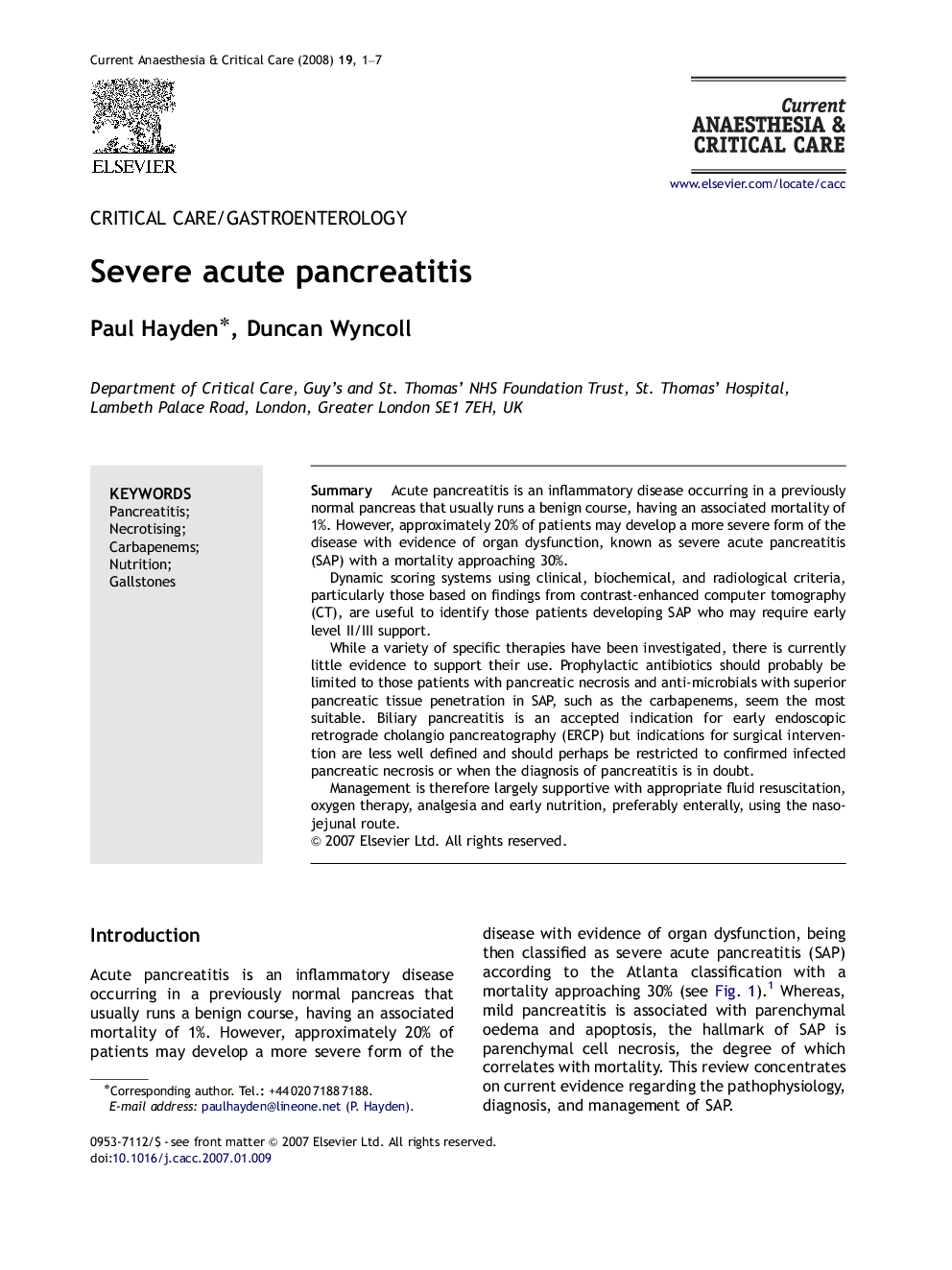| Article ID | Journal | Published Year | Pages | File Type |
|---|---|---|---|---|
| 2608047 | Current Anaesthesia & Critical Care | 2008 | 7 Pages |
SummaryAcute pancreatitis is an inflammatory disease occurring in a previously normal pancreas that usually runs a benign course, having an associated mortality of 1%. However, approximately 20% of patients may develop a more severe form of the disease with evidence of organ dysfunction, known as severe acute pancreatitis (SAP) with a mortality approaching 30%.Dynamic scoring systems using clinical, biochemical, and radiological criteria, particularly those based on findings from contrast-enhanced computer tomography (CT), are useful to identify those patients developing SAP who may require early level II/III support.While a variety of specific therapies have been investigated, there is currently little evidence to support their use. Prophylactic antibiotics should probably be limited to those patients with pancreatic necrosis and anti-microbials with superior pancreatic tissue penetration in SAP, such as the carbapenems, seem the most suitable. Biliary pancreatitis is an accepted indication for early endoscopic retrograde cholangio pancreatography (ERCP) but indications for surgical intervention are less well defined and should perhaps be restricted to confirmed infected pancreatic necrosis or when the diagnosis of pancreatitis is in doubt.Management is therefore largely supportive with appropriate fluid resuscitation, oxygen therapy, analgesia and early nutrition, preferably enterally, using the naso-jejunal route.
